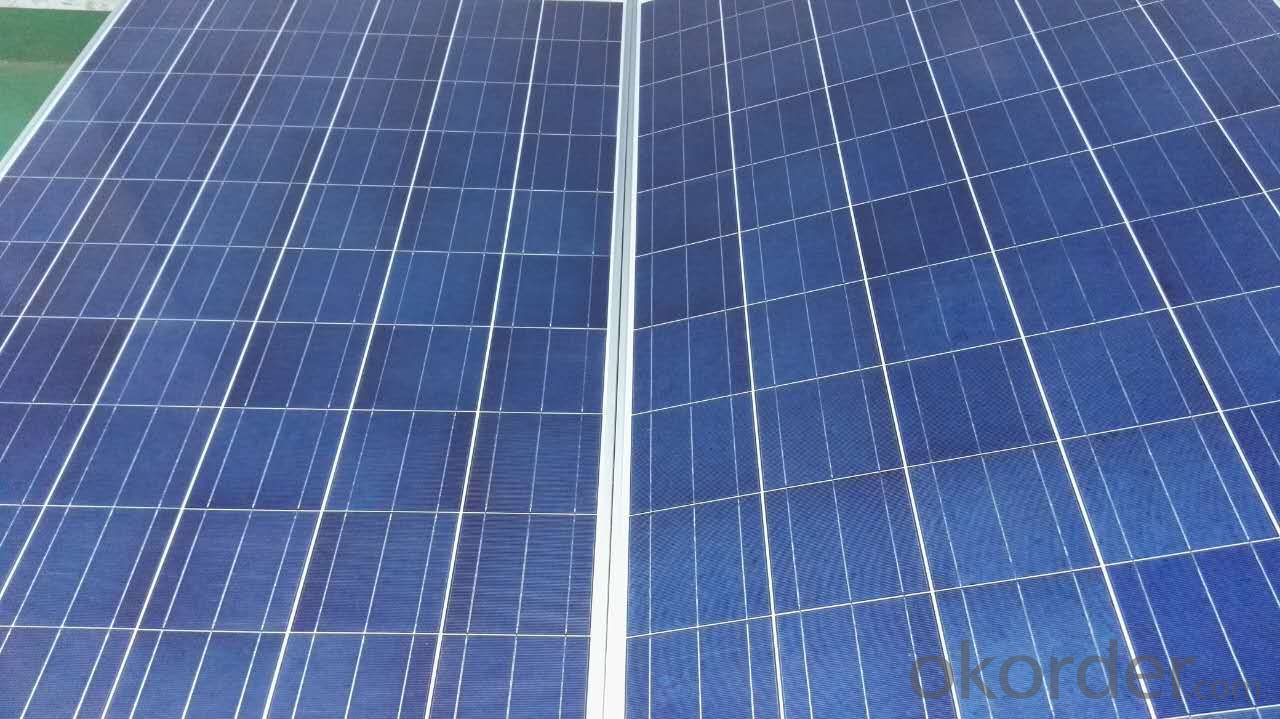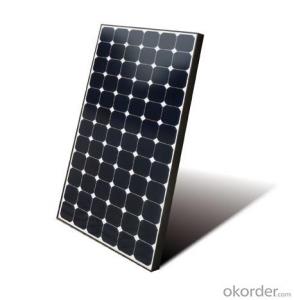CNBM Poly 80W Off Grid Solar Sytem with 10 Years Warranty
- Loading Port:
- Shanghai
- Payment Terms:
- TT OR LC
- Min Order Qty:
- 100 watt
- Supply Capability:
- 1000 watt/month
OKorder Service Pledge
OKorder Financial Service
You Might Also Like
Item specifice
CNBM Poly 80W Off Grid Solar Sytem with 10 Years Warranty
Product description
Electrical power can be generated on-site with renewable energy sources such as solar (particularly with photovoltaics), wind, micro hydro, geothermal; with a generator or Micro combined heat and power with adequate fuel reserves. Such a system is called a stand-alone power system. In addition, it is possible to simply eliminate electric power such as in Old Order Amish and Old Order Mennonitecommunities.
TThe concept of a sustainable off-grid community must take into consideration the basic needs of all who live in the community. To become truly self-sufficient, the community would need to provide all of its own electrical power, food, shelter and water. Using renewable energy, an on-site water source, sustainable agriculture and vertical farming techniques is paramount in taking a community off the grid. A recent concept design by Eric Wichman shows a multi-family community, which combines all of these technologies into one self-sufficient neighborhood. To grow the community you simply add neighborhoods using the same model as the first. A self-sustained community reduces its impact on the environment by controlling its waste and carbon footprint
Application
Residential
Commercial
Industrial
Feature
Off-the-grid homes are autonomous; they do not rely on municipal water supply, sewer, natural gas, electrical power grid, or similar utility services. A true off-grid house is able to operate completely independently of all traditional public utility services. The idea has been recently popularized by certain celebrities including Ed Begley, Jr.[3] who stars in the Living with Ed[4] television show on the Home & Garden Television (HGTV) network. Actress Daryl Hannah promotes off-grid living and constructed her home in Colorado according to those principles, as does survival expert and Dual Survival co-star Cody Lundin,[5] who lives in a self-designed, passive solar earth house in the high-desert wilderness of Northern Arizona, collecting rainwater, composting waste, and paying nothing for utilities.[6][7]
Packaging
With carton and box
- Q:How do solar energy systems impact water quality?
- Solar energy systems have a positive impact on water quality as they do not produce any harmful pollutants or emissions during operation. Unlike traditional fossil fuel sources, solar energy does not require water for cooling or produce any wastewater, reducing the risk of water contamination. This makes solar energy systems a sustainable and environmentally-friendly option that helps to preserve and maintain water quality.
- Q:Can solar energy systems be used for emergency backup power during power outages?
- Yes, solar energy systems can be used for emergency backup power during power outages. Solar panels can generate electricity even when the grid is down, as long as they are connected to a battery storage system. This allows homeowners or businesses to store excess solar energy during the day and use it during an outage. It provides a reliable and sustainable alternative to traditional backup generators, reducing dependence on fossil fuels and ensuring continuous power supply during emergencies.
- Q:Can solar energy systems be used in areas with high pollution?
- Yes, solar energy systems can still be used in areas with high pollution. While pollution may reduce the efficiency of solar panels to some extent, they can still generate electricity even in polluted environments. Furthermore, using solar energy can help reduce the dependency on fossil fuels and contribute to reducing pollution over time.
- Q:Can solar energy systems be used for powering off-grid wildlife monitoring stations?
- Yes, solar energy systems can be used for powering off-grid wildlife monitoring stations. Solar panels can capture sunlight and convert it into electricity, which can then be stored in batteries for use during the night or cloudy days. This makes it a reliable and sustainable source of power for remote wildlife monitoring stations that are located far away from the grid. Additionally, solar energy systems are cost-effective and environmentally friendly, making them an ideal choice for powering off-grid wildlife monitoring stations.
- Q:What is the payback period for installing a solar energy system?
- The payback period for installing a solar energy system can vary depending on various factors such as the initial cost of the system, the amount of energy it generates, and the cost of electricity in your area. However, on average, the payback period for a residential solar energy system is typically between 5 to 10 years. This means that it takes around 5 to 10 years for the savings on your electricity bills to equal the upfront cost of installing the system. After the payback period, you can enjoy free or significantly reduced electricity costs for the remaining lifespan of the system, which is typically around 25 to 30 years. It is important to note that government incentives, tax credits, and net metering programs can further reduce the payback period and increase the overall financial benefits of installing a solar energy system.
- Q:Can solar panels be installed on floating platforms or buoys in bodies of water?
- Yes, solar panels can be installed on floating platforms or buoys in bodies of water. These floating solar installations, also known as floating solar farms or floating photovoltaic systems, have gained popularity in recent years. They offer several advantages such as utilizing underutilized water surfaces, minimizing land requirements, and reducing evaporation from water bodies. Floating solar panels can be a viable and sustainable option for generating renewable energy.
- Q:Can solar energy systems be used for powering agricultural machinery?
- Yes, solar energy systems can be used for powering agricultural machinery. Solar panels can generate electricity that can be used to power various agricultural equipment such as irrigation pumps, tractors, and crop dryers. This helps reduce the dependence on fossil fuels and lowers operating costs for farmers while promoting sustainable and eco-friendly farming practices.
- Q:What is the difference between on-grid and off-grid solar energy systems?
- The main difference between on-grid and off-grid solar energy systems lies in their connection to the utility grid. On-grid systems are connected to the electric grid, allowing for the seamless exchange of energy between the solar system and the grid. This means that excess electricity generated by the solar panels can be sent back to the grid, while electricity can also be drawn from the grid when solar production is low. Off-grid systems, on the other hand, are not connected to the grid and operate independently. They typically rely on batteries to store excess energy for use during periods of low solar production. Off-grid systems are commonly used in remote areas where grid connection is not available or in situations where individuals prefer to be self-sufficient and not rely on the grid.
- Q:What is net metering?
- Net metering is a billing system that allows individuals or businesses with solar panels or other renewable energy systems to receive credit for any excess electricity they generate and feed back into the grid. This means that when they produce more energy than they consume, the surplus is sent to the utility company, and they receive a credit on their electricity bill for the excess energy contributed.
- Q:What government incentives are available for solar energy systems?
- There are several government incentives available for solar energy systems that encourage individuals and businesses to adopt renewable energy sources. One of the most common incentives is the federal Investment Tax Credit (ITC), which offers a tax credit of up to 26% of the cost of installing a solar energy system. This credit can significantly reduce the upfront costs associated with installing solar panels. Additionally, many states offer their own incentives to promote solar energy adoption. These can include state tax credits, rebates, grants, or low-interest loans specifically targeted at solar installations. The availability and amount of these incentives vary by state, so it's important to research the specific programs offered in your area. Net metering is another incentive that allows solar energy system owners to earn credits for excess electricity they generate and feed back into the grid. This means that when your solar panels produce more electricity than you consume, the excess energy is sent back to the grid, and you receive a credit for it on your utility bill. Net metering policies vary by state, but it can significantly reduce your electricity costs and even earn you money in some cases. Furthermore, some local governments offer property tax exemptions or abatements for solar energy systems, reducing the property tax burden for those who install solar panels. This can provide long-term financial benefits and increase the overall return on investment for solar energy system owners. Lastly, there are various grants and incentives available for nonprofit organizations, schools, and government entities to install solar energy systems. These programs aim to promote clean energy adoption in public buildings and institutions, reducing their carbon footprint and energy costs. It's important to note that the availability and specifics of these government incentives may change over time, so it's advisable to consult with local solar installers, government agencies, or professional tax advisors to ensure you are taking full advantage of the incentives available in your area.
1. Manufacturer Overview |
|
|---|---|
| Location | |
| Year Established | |
| Annual Output Value | |
| Main Markets | |
| Company Certifications | |
2. Manufacturer Certificates |
|
|---|---|
| a) Certification Name | |
| Range | |
| Reference | |
| Validity Period | |
3. Manufacturer Capability |
|
|---|---|
| a)Trade Capacity | |
| Nearest Port | |
| Export Percentage | |
| No.of Employees in Trade Department | |
| Language Spoken: | |
| b)Factory Information | |
| Factory Size: | |
| No. of Production Lines | |
| Contract Manufacturing | |
| Product Price Range | |
Send your message to us
CNBM Poly 80W Off Grid Solar Sytem with 10 Years Warranty
- Loading Port:
- Shanghai
- Payment Terms:
- TT OR LC
- Min Order Qty:
- 100 watt
- Supply Capability:
- 1000 watt/month
OKorder Service Pledge
OKorder Financial Service
Similar products
New products
Hot products
Related keywords





























